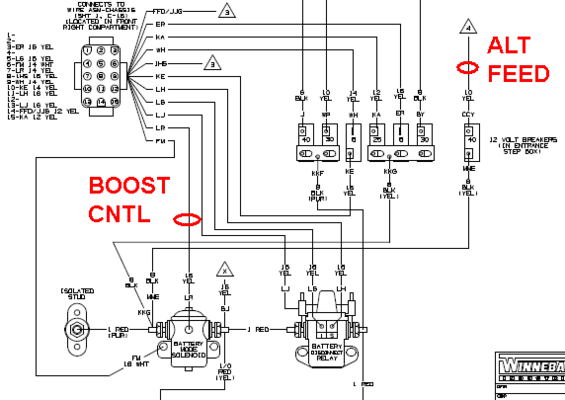WME
Well-known member
2003 Brave 30ft Workhorse
Short version..I replaced my 2 old golf cart batteries with 2 LifePo4 100ah batteries.
To protect the alternator I am charging the lipos with a 40 amp DC to DC charger, all is good. BUT I need to disconnect/unplug the isolator so I don't have parallel charging.
I have the Winnebago coach wiring diagram and the Workhorse chassis wiring diagram. Neither are overly useful as there is no interconnect between them.
I've tried various combos of removing wires and unplugging control wires. I get no change or more common something stops working, steps, converter charging, or everything stops.
Does anybody have a simple way to make the isolator stay open? and everything else still work???
Short version..I replaced my 2 old golf cart batteries with 2 LifePo4 100ah batteries.
To protect the alternator I am charging the lipos with a 40 amp DC to DC charger, all is good. BUT I need to disconnect/unplug the isolator so I don't have parallel charging.
I have the Winnebago coach wiring diagram and the Workhorse chassis wiring diagram. Neither are overly useful as there is no interconnect between them.
I've tried various combos of removing wires and unplugging control wires. I get no change or more common something stops working, steps, converter charging, or everything stops.
Does anybody have a simple way to make the isolator stay open? and everything else still work???

